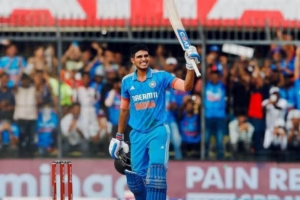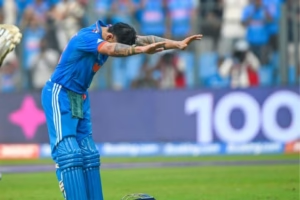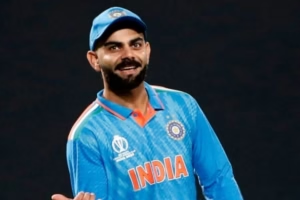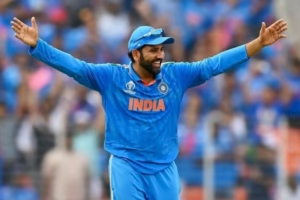Why SRH Failed in IPL 2025
By Swapneel Deshpande 06 May 2025, 16:18 IST


After a thrilling season in 2024 that saw Sunrisers Hyderabad (SRH) emerge as one of the most exciting teams in the tournament, expectations were high from them in IPL 2025. The team had a fresh leadership group, attacking intent, and several match-winners. Yet, things fell apart far too soon. SRH failed to make the playoffs and were left searching for answers in what turned out to be a frustrating campaign.
Let’s take a closer look at what went wrong for SRH this season.
The Silent Void Left by Shahbaz Ahmed
Last year, Shahbaz Ahmed was not in the headlines, nor was he the face of the campaign. But his presence made a big difference. He was the kind of player every team needs – dependable, flexible, and quietly effective. Whether it was finishing the innings with the bat or offering a few overs of spin to break partnerships, Shahbaz filled the gap between the top-order firepower and the bowling attack.
He scored over 200 runs and picked up key wickets. Importantly, he gave SRH the luxury of balance – allowing them to play with freedom up top while maintaining control in the middle. Come 2025, his absence was sorely felt. SRH simply couldn’t find a like-for-like replacement. They needed someone who could chip in with both bat and ball, especially when their stars failed – and that void remained unplugged all season.
The Chopping and Changing Conundrum
One of the defining features of a successful T20 side is stability – in roles, lineups, and tactics. But SRH’s season was marred by constant experimentation, particularly when it came to their fourth overseas player. With Pat Cummins, Travis Head, and Heinrich Klaasen being automatic picks, the team struggled to fix the final foreign slot.
Adam Zampa, the Australian spinner, got a few chances but failed to impress and was soon sidelined due to a shoulder injury. Wiaan Mulder, the South African all-rounder, played a game but couldn’t contribute much either with bat or ball. Towards the latter half of the season, Kamindu Mendis was drafted in. Known for his ambidextrous bowling, he offered some hope. But with his underwhelming T20 numbers (low batting average and very few wickets), Mendis’s performances came too little, too late.
This constant rotation not only unsettled the team combination but also prevented the squad from building rhythm and confidence.
Fast Bowlers Blow Cold
SRH’s bowling unit, particularly the seamers, failed to fire when it mattered most. Mohammed Shami had a forgettable season, showing none of the form that made him one of the IPL’s most feared bowlers. Pat Cummins, the captain, had his moments but couldn’t consistently deliver breakthroughs. Harshal Patel, known for his variations, also struggled to adapt to the conditions.
Young pacer Simarjeet Singh, who was expected to bring energy and aggression, only showed glimpses of potential but lacked execution. The conditions in Hyderabad, which offered little to the bowlers, made matters worse. With their pace attack misfiring, SRH couldn’t control the powerplay or death overs – two of the most crucial phases in a T20 game.
Tactical Errors and Impact Player Misuse
The IPL’s Impact Player rule has added a new strategic layer to the game, and many teams have used it to great effect. Unfortunately, SRH wasn’t one of them. Their choices in bringing on Impact Players often backfired. A notable example came in the match against Mumbai Indians at the Wankhede. After Shami went for runs, SRH introduced Rahul Chahar as their Impact Player on a slow pitch. It seemed like a logical move – except Chahar bowled just one over. The logic behind his selection and lack of use left fans and analysts scratching their heads.
This wasn’t a one-off error. Across the tournament, SRH’s Impact Players failed to make an impact. Sometimes, players like Mulder or Abhinav Manohar were subbed in not for tactical reasons, but because of poor batting displays that left the team short on depth. When such substitutions become reactive rather than proactive, the effectiveness of the rule is lost.
From Stability to Uncertainty
When Cummins and head coach Daniel Vettori took over the team from Aiden Markram and Brian Lara, they were praised for bringing a sense of calm and structure. That approach worked wonders in 2024. But in 2025, things started to unravel.
The overseas core underperformed, Indian bowlers lacked consistency, and team selections became unpredictable. It was a sharp contrast from the brave, attacking, and well-balanced side of last season. SRH looked like a team trying too many things but succeeding at none.
Lessons for 2026
SRH’s exit from IPL 2025 wasn’t due to one bad game or one poor decision. It was the result of several small cracks that widened over time. The team missed the calm versatility of someone like Shahbaz Ahmed. They couldn’t get their bowling plans right. Their bench strength didn’t step up. And their tactical decisions, especially around Impact Players, left a lot to be desired.
Going forward, the franchise will need to reassess its squad composition, invest in utility players who offer flexibility, and return to a more settled playing XI. If they can blend their aggression with better planning, SRH could very well bounce back stronger next season.
After all, the potential is there. What they need now is balance, clarity, and a bit of the old magic.
Stay updated with all the cricketing action, follow Cricadium on WhatsApp, Facebook, Twitter, Telegram, and Instagram
You might also like
Recommended to you












